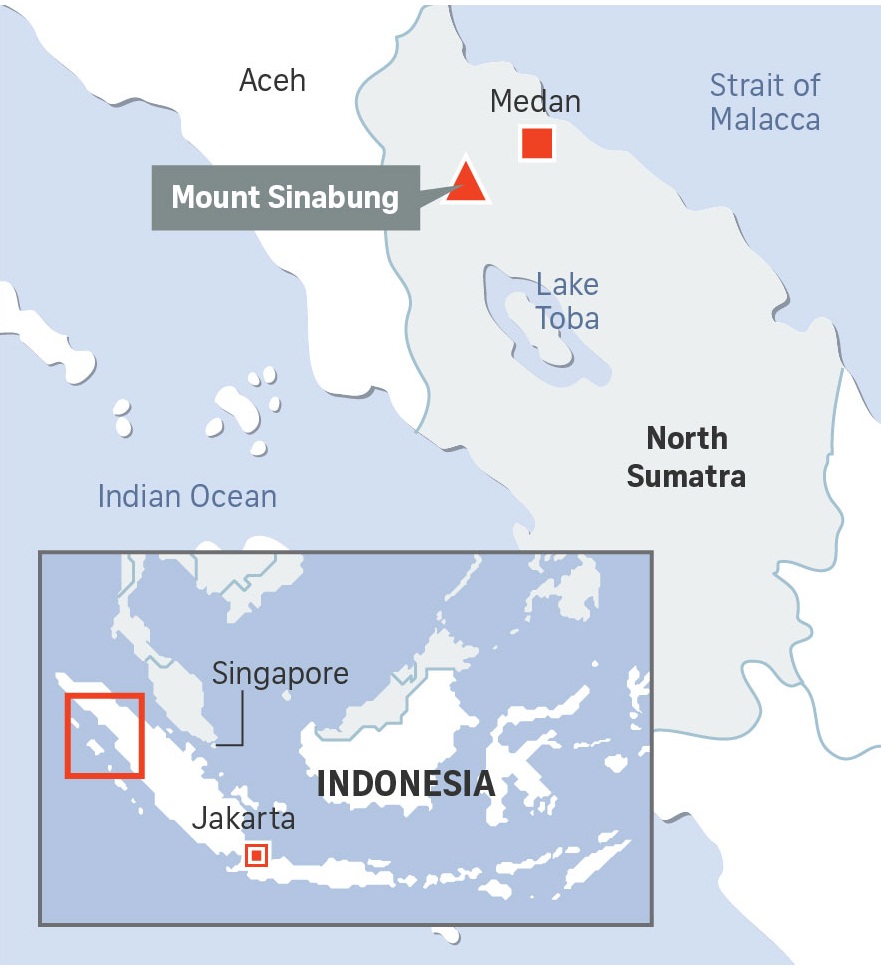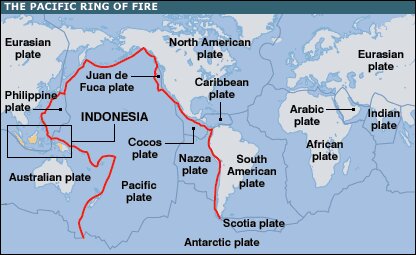Indonesia’s Mt. Sinabung Erupted | 12 Aug 2020
Why in News
Recently, Mt. Sinabung, an active volcano on Indonesia’s Sumatra island has erupted.
- Mount Sinabung is located in Karo regency, North Sumatra.
Key Points
- Mt. Sinabung:
- It is among more than 130 active volcanoes in Indonesia, which is prone to seismic upheaval due to its location on the Pacific’s Ring of Fire.
- The volcano was dormant for 400 years before exploding in 2010. It exploded again in 2014 and 2016.
- Ring of Fire:
- The Ring of Fire, also referred to as the Circum-Pacific Belt, is a path along the Pacific Ocean characterized by active volcanoes and frequent earthquakes.
- It traces boundaries between several tectonic plates—including the Pacific, Cocos, Indian-Australian, Nazca, North American, and Philippine Plates.
- 75% of Earth’s volcanoes i.e. more than 450 volcanoes are located along the Ring of Fire. 90% of Earth’s earthquakes occur along its path.
- The abundance of volcanoes and earthquakes along the Ring of Fire is caused by the amount of movement of tectonic plates in the area.
- Along much of the Ring of Fire, plates overlap at convergent boundaries called subduction zones. That is, the plate that is underneath is pushed down, or subducted, by the plate above. As rock is subducted, it melts and becomes magma. The abundance of magma so near to Earth’s surface gives rise to conditions ripe for volcanic activity.
- A significant exception is the border between the Pacific and North American Plates. This stretch of the Ring of Fire is a transform boundary, where plates move sideways past one another. This type of boundary generates a large number of earthquakes as tension in Earth’s crust builds up and is released.


